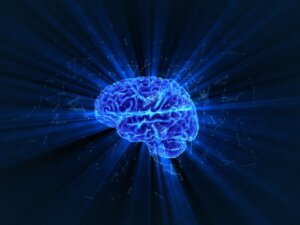Yagerian Therapy: Using the Mind to Heal


Written and verified by the psychologist Sergio De Dios González
When you find yourself in trouble or in situations that cause you distress, you hope to do something to make a change. However, sometimes, although you’ve tried different solutions, you still don’t succeed. This causes you to feel extremely frustrated at being unable to escape. On these occasions, Yagerian therapy could prove to be helpful.
Yagerian therapy is a psychotherapeutic process that goes beyond the traditional. It’s brief and allows you to reach an amplified level of consciousness that favors the identification of the origin of your mental, behavioral, physical, or psychogenic problems and their healing. It’s also known as subliminal therapy.
“Going beyond traditional therapies to find a true cure for patients.”
-Edwin K. Yager-
Origins and principles of Yagerian therapy

Yagerian therapy was developed by Edwin K. Yager. He was originally an electronic engineer who later chose to specialize in psychological counseling. He worked as a professor at the University of California Medical School in San Diego (UCSD).
Edwin Yager studied and practiced the clinical use of hypnosis for 40 years. In fact, he was certified as a hypnosis consultant by the American Society of Clinical Hypnosis.
Yager explained his methodology in Yagerian Therapy: Using the Mind to Heal. He claimed that certain abilities beyond consciousness intervene to discover the real causes of the problems that patients have, regardless of their manifestation.
Yagerian therapy consists of a method of therapeutic change. It’s based on the following:
- Efficiency. It connects the person with what’s healthy.
- Brevity. Its duration is short.
- Logic. There’s coherence between the manifesting ideas and facts.
This method began in the United States. However, it’s since expanded and there’s now a training center in Latin America. Through analytical hypnotic therapy, therapists seek to identify the origin of the problem and heal it, taking into account how it influences the patient’s current life. To do this, they work on the interior of the mind.
Principles of Yagerian therapy
Yagerian therapy is based on four principles:
- Conditioning. Humans are all conditioned by various situations that leave a strong emotional imprint on them.
- Memories. The situation that left these emotional imprints on them leaves them with memories that scar them, hence are painful for them.
- Reconditioning. They didn’t have the appropriate psychological tools to manage these situations which left them emotionally scarred. Therefore, reconditioning involves convincing them to support the goal to change with the current resources they have available.
- Triadic view of the mind or model of the mind. Firstly, there’s the conscious part of the mind that’s aware of what they’re going through. Then, there’s the unconscious mind. It’s linked with memories, impulses, sensations, and emotions that can’t be accessed or that are repressed. Finally, there’s the superconscious mind. This is the higher level of intelligence where unlimited mental abilities are found, with the ability to access other areas of the mind to solve problems.
If you wanted to work on your fear of loneliness through Yagerian therapy, the first step would be to identify the origin of your fear. Maybe it’s related to a moment in your childhood when you felt especially vulnerable and unprotected. Indeed, that event may have left such a strong mark on you that you’re afraid to be alone today.
Through analytical hypnosis, you recondition that part of your mind. In effect, you recognize that, at the time, you didn’t have the resources to face this particular situation. However, it wouldn’t phase you now and you’d know how to solve it. Therefore, it’d no longer make you feel uncomfortable. It’s your superconscious side or superior intelligence that’s providing you with the necessary tools here.
Differentiation of Yagerian therapy

Yagerian therapy can be differentiated from other types of therapy because patients don’t focus on a narrative and explain what’s happening to them. Instead, they find the source of their problem from inside their mind, with their own resources.
So what does the therapist do? They’re in charge of teaching the patient the necessary skills to recondition their thoughts. Consequently, they remain on the outside as a figure that offers support. They don’t find out everything that’s related to the problem. In fact, it’s the patient who, through their mental representations, undoes the knots associated with its origin.
The usefulness of Yagerian therapy
Yagerian therapy can be useful if you feel like you have psychological problems or blockages that are preventing you from continuing with your life as smoothly as you’d like. With this therapy, you can recondition what’s proving to be toxic to you and enhance your current well-being.
This method of therapeutic change favors personal development. It’s effective in the following fields:
- Behavioral aspects. Improving habits, solving dependencies, and recognizing problems, among others.
- Mental aspects. Resolving anxiety, emotional conflicts, grief, and depression.
- Physical issues. Helping with chronic pain, migraines, and asthma.
Yagerian therapy is recommended if there’s a psychological factor that’s affecting physical, emotional, or behavioral aspects of your life and you need a timely, brief, and accurate solution. However, for it to be effective, you have to be motivated to solve the problem. Furthermore, you must be committed to complying with the therapist’s instructions and be open to making the therapy work to initiate the change you need.
You also need to prepare your mind for a conscious change. You must enhance the resources that’ll help you to empower yourself and transform your dysfunctional learning. This will favor what you really want, improve your human development, and facilitate your relearning.
In short, Yagerian therapy is an innovative and effective method that helps you unblock yourself. By expanding your consciousness, you’re able to solve your problems, with the guidance of a therapist and by utilizing your three minds.
All cited sources were thoroughly reviewed by our team to ensure their quality, reliability, currency, and validity. The bibliography of this article was considered reliable and of academic or scientific accuracy.
- Montgomery, G. H. (2004). Eficacia y aplicación de la hipnosis clínica. Pap. psicol, 0-0.
- Montgomery, G. H., & Schnur, J. B. (2005). Eficacia y aplicación de la hipnosis clínica. Papeles del psicólogo, 25(89), 3-8.
- Yager, E. (2018). Yagerian Therapy: Using the Mind to Heal. Independentliy published,
This text is provided for informational purposes only and does not replace consultation with a professional. If in doubt, consult your specialist.








